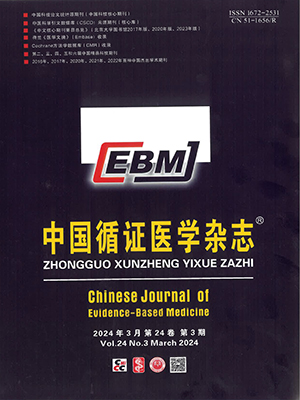Objective To analyze the methodological quality of clinical practice guideline mentioned “evidence-based” in China.
Methods We selected clinical guidelines developed based on evidence issued by the Chinese Medical Association in 2010-2012, and meanwhile, we conducted additional search for guidelines on clinical major diseases. Then, we selected literature according to the inclusion and exclusion criteria and evaluated the included guidelines according to 8 items relevant to methodological rigor which were selected from the Appraisal of Guidelines for Research and Evaluation (AGREE II). If the guidelines comply with the item, we recorded 1 point, otherwise 0 point.
Results a) Among twenty-two included guidelines, 13 were originated and 9 were updated once every 3 to 5 years. b) Diseases covered stroke, diabetes, chronic hepatitis B, hypertension, pediatric nutrition, etc. c) The number of guideline references were 10 to 218, of which, nine guidelines cited 24 Cochrane systematic reviews (CDSRs), accounted for 2.62% (24/916). Among them, the acute ischemic stroke guideline cited the most (7 CDSRs). d) The number of experts involved in guidelines development was 2 to 95 and guidelines pages were 4 to 150. e) The guidelines’ quality generally scored 4 to 7, most of which described the process of guidelines development. The grades of recommendation were consistent with the levels of evidence. But most of the included guidelines did not clearly described literature research methods, peer reviewer, and update procedures.
Conclusion There is a growing trend that clinical guidelines are developed based on evidence in China. However, the quality of reporting and the methodological rigor of guidelines need further improvement. The citation rates of Cochrane systematic reviews in these guidelines were relatively low. We suggest that guideline recommendations should be consistent with the levels of evidence and adapt to local conditions, and relevant support policies for guideline implementation in practice. In future, attention should be paid to the aspects of guideline development methods, reporting standard, guideline accessibility, and standard training for relevant personnel.
Citation: WEI Maoling,LIU Ming. Analysis of Clinical Guidelines Developed Based on Evidence in China. Chinese Journal of Evidence-Based Medicine, 2013, 13(8): 927-932. doi: 10.7507/1672-2531.20130162 Copy




